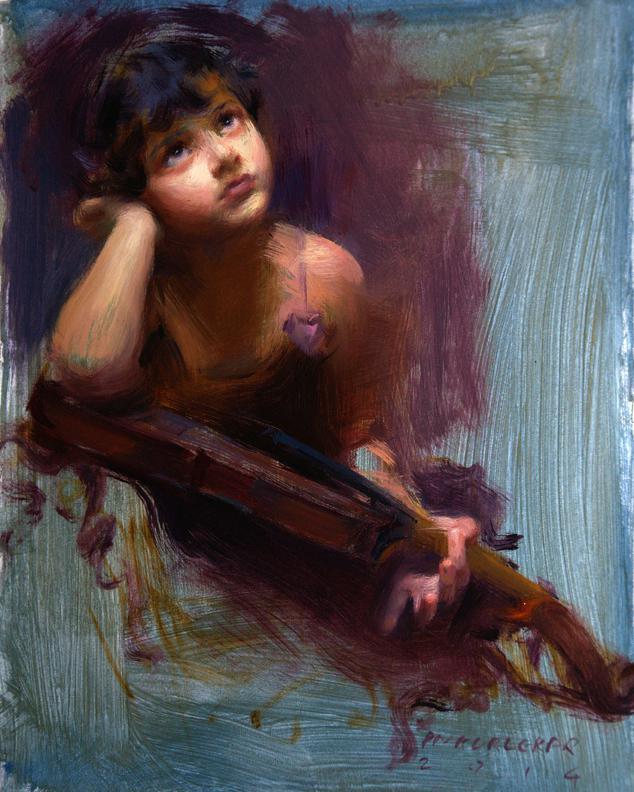The Effect of Figurative Oil Painting on Modern Art and Society
The Effect of Figurative Oil Painting on Modern Art and Society
Blog Article
The Role of Feeling and Expression in Metaphorical Oil Painting: An Extensive Evaluation of Subject and Structure
The interplay of emotion and expression in figurative oil painting offers as an important lens via which one can take a look at the elaborate partnership in between subject matter and make-up. Artists harness different methods, from color choice to brushstroke dynamics, to cultivate psychological resonance within their works.
Comprehending Feeling in Art
Feeling in art functions as an effective channel for expression, enabling artists to convey intricate sensations through their job. In metaphorical oil painting, this psychological deepness is commonly depicted with the depiction of the human figure, catching the subtleties of human experience. The option of subject, color palette, and brushwork all contribute to the emotional resonance of a piece.
Artists often attract upon individual experiences, social issues, or global themes to evoke sensations in the audience. As an example, a portrait may show susceptability, while a dynamic number in activity can signify freedom or chaos. These psychological threads link the customer to the art work, promoting a discussion that goes beyond the visual medium.
In addition, the interplay between light and shadow can enhance emotional strength, leading the visitor's stare and attracting attention to specific aspects within the composition. Making use of structure in oil paint additionally includes layers of complexity, inviting a tactile reaction that enhances the emotional experience. Overall, understanding emotion in art is crucial for appreciating the nuances that identify metaphorical oil paint, as it changes simple representation into a profound exploration of the human condition.
Key Aspects of Make-up
In the world of figurative oil painting, the make-up acts as the underlying framework that arranges aesthetic aspects and improves the psychological narrative. Important parts of structure include balance, comparison, centerpiece, and rhythm, each adding to the general impact of the artwork.
Balance refers to the distribution of visual weight within the paint, which can be achieved with balanced or unbalanced plans. A well-balanced composition provides security, permitting the visitor to engage with the item sympathetically - figurative oil painting. Contrast, on the other hand, entails comparing various aspects, such as dark and light or warm and awesome colors, to lead the visitor's eye and stimulate psychological reactions
The focal factor is vital, as it routes focus to the most significant part of the painting, often highlighting the psychological core of the story. By masterfully incorporating these key components, artists can craft mentally resonant and compelling metaphorical oil paints that mesmerize and engage their audience.
Subject Matter and Its Effect
Topic plays a crucial role in figurative oil painting, as it not just works as the foundation for the narrative however likewise shapes the customer's analysis and psychological involvement with the art work. The option of subject-- be it a solitary figure, a group dynamic, or a thematic representation-- straight influences the emotional ambience communicated to the audience.

For example, portraits usually stimulate personal connections, revealing the details of human expression and character, while scenes showing common activities can develop a sense of belonging or fond memories. Moreover, the historical and cultural context of the subject matter enriches the viewer's understanding, prompting much deeper reflections on social standards, values, and the human condition.
Various topics likewise create differing degrees of interaction; a significant conflict portrayed with figures in tension might elicit sensations of stress and anxiety or compassion, while serene landscapes can invoke peace and consideration. Inevitably, the effect of subject in figurative oil painting is profound, as it acts as an avenue for emotional resonance, assisting the audience's feedback and analysis, and fostering a connection in between the art work and the onlooker. This interaction is vital for the effective communication of the artist's intent.
Techniques for Evoking Sensations
The effectiveness of figurative oil painting in communicating emotions is substantially influenced by the techniques used by the musician. Among one of the most essential methods is using color theory, where the calculated choice of shades can evoke particular emotional reactions. Cozy colors, such as reds and oranges, typically generate feelings of interest or aggression, while cooler tones like blues and greens tend to stimulate peace or unhappiness.
An additional crucial strategy is the control of light and shadow, referred to as chiaroscuro. This approach boosts the three-dimensionality of numbers, producing dramatic contrasts that can magnify emotional depth. The positioning of light can lead visitors' emotions, highlighting details components of the structure.
Brushwork also plays a vital duty; loose, expressive strokes can convey power and spontaneity, whereas smoother methods may recommend peace or accuracy. The plan of subjects within the composition can affect emotional influence. Close proximity can recommend intimacy, while distance might indicate isolation.
Ultimately, the mix of these techniques makes it possible for artists to craft narratives that resonate with the visitor, changing a useful source mere aesthetic experience right into an expressive emotional journey. - figurative oil painting

Instance Research Studies of Notable Functions
Analyzing significant jobs of figurative oil paint exposes just how various techniques are utilized to evoke effective feelings. One excellent case is Edvard Munch's "The Scream," where the distorted figure and swirling background convey existential fear. Munch's usage of shade-- vibrant oranges and deep blues-- magnifies the emotional impact, showcasing exactly how combination choices can shape viewer experience.
One more substantial job is Pablo Picasso's "Les Demoiselles d'Avignon." Below, fragmented kinds and bold brushstrokes reflect a tumultuous psychological landscape, challenging conventional representations of the female figure. Picasso's cutting-edge composition not only records the visitor's focus however additionally welcomes consideration on styles of identity and sexuality.
In Addition, Frida Kahlo's "The 2 Fridas" supplies an emotional expedition of duality and self-identity. The contrasting figures, linked by a shared heart, exemplify Kahlo's psychological deepness and personal story. figurative oil painting. Her careful interest to information and symbolic components offer to engage visitors on a natural level
These study highlight the profound link between emotion and structure in metaphorical oil paint, revealing how musicians harness strategy to interact complicated feelings and narratives that reverberate throughout time and culture.

Final Thought
Finally, the interplay of feeling and expression in metaphorical oil painting dramatically boosts the audience's experience and interpretation of investigate this site the artwork. Via a mindful selection of subject and compositional strategies, artists communicate profound stories that resonate on both universal and personal levels. The application of color brushwork, concept, and chiaroscuro more enhances emotional depth, changing each canvas right into an effective reflection of the complexities of the human experience.
In figurative oil paint, this psychological deepness is commonly portrayed via the depiction of the human number, capturing the you can try these out subtleties of human experience.Moreover, the interaction between light and darkness can intensify emotional strength, directing the visitor's stare and attracting focus to particular elements within the composition. The usage of structure in oil paint further includes layers of intricacy, inviting a responsive action that boosts the emotional experience.The focal factor is vital, as it guides attention to the most substantial part of the painting, typically highlighting the emotional core of the story. Ultimately, the effect of subject issue in figurative oil painting is extensive, as it offers as an avenue for emotional vibration, guiding the audience's response and interpretation, and cultivating a connection between the artwork and the onlooker.
Report this page